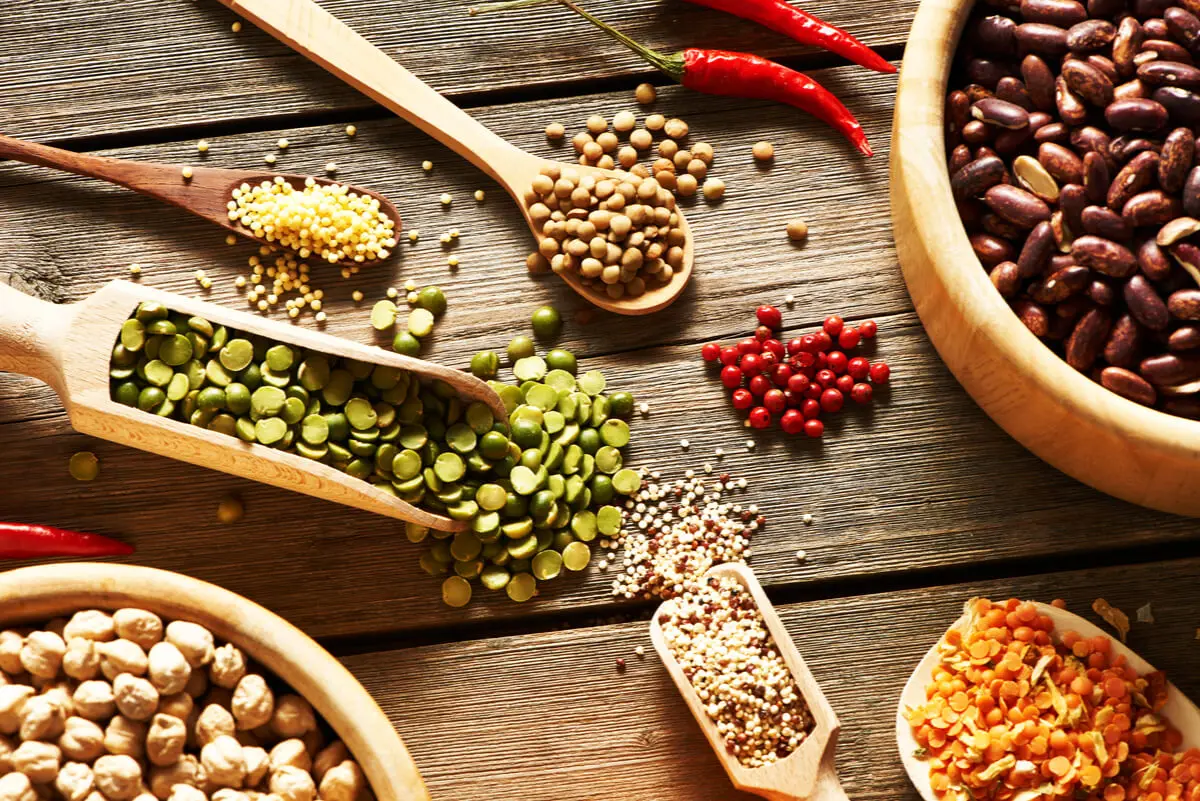When to Introduce Legumes into a Baby's Diet?


Written and verified by the nutritionist Saúl Sánchez Arias
When is it best to introduce legumes into a baby’s diet? This food stands out for its abundant fiber content and essential nutrients. In addition, it’s an important source of protein. The problem lies in the fact that they’re difficult to digest, which can cause some discomfort.
Because of this, the introduction of legumes into a baby’s diet should be carried out with care, and only when the digestive system is ready. This will prevent the baby from developing allergies or other problems that will reduce their quality of life.
When to introduce legumes into a baby’s diet?
From the sixth month, it’s possible to begin to introduce complementary feeding. At this time you can start offering legumes. It’s important to start with those that are easier to digest. Otherwise, gas formation increases and intestinal discomfort appears.
In fact, some specialists advise waiting until the tenth month to ensure greater intestinal development. At first, it’s advisable to include legumes such as peas and lentils in the diet, which, in principle, are less problematic.
In addition, they can be mashed to avoid problems related to an excessive fiber intake. From the age of one year onwards, try other varieties such as beans and chickpeas.

Read more: 7 Ways to Increase Your Fiber Intake and Combat Constipation
Why are legumes important in a baby’s diet?
It should be noted that legumes guarantee a good supply of fiber. This substance is essential to improve intestinal flora health. It ferments in the digestive tract, which produces a growth of bacteria in the intestine.
We’re talking about types of foods that have a significant micronutrient content. Among them, iron stands out, which is a fundamental element to avoid the development of anemia, according to research published in The Medical Clinics of North America.
Likewise, legumes are ideal to increase protein content in our diets. Thanks to these nutrients, proper tissue growth and development is ensured. If you don’t cover these requirements, problems related to the loss of muscle mass could be experienced.
It has been shown that it is necessary to achieve a minimum amount of protein throughout the day for the child to develop correctly.
Aspects to take into account
When introducing legumes into the infant diet we mustn’t forget certain key points. First of all, always choose fresh varieties, as canned ones have excessive amounts of sodium due to the brine.
At the same time, it’s important to soak them for at least 24 hours, in order to soften them and make them digest more efficiently afterwards. In this way, they’ll be softer in texture, which will make it easier for the baby to eat them.
It’s possible to grind legumes to facilitate their consumption. However, in recent years, baby-led weaning, a protocol under which food is offered to the child in its natural state, has been promoted. However, special care must be taken to avoid choking.
Finally, it’s important to check that the child has no allergies to these foods. Otherwise, you will need to eliminate them from their diet.
Find out more: Fiber-Packed Foods that Can Help You Lose Weight
Which legumes are recommended in a baby’s diet?

As we mentioned, you should prioritize the consumption of peas and lentils. You can prepare purees with these foods, mixing them with pieces of meat. This ensures a more complete supply of nutrients, especially proteins of high biological value.
Other varieties can be introduced progressively, although the last ones to enter the diet should be peanuts. Although many people consider them to be nuts, they are technically legumes. They’re difficult to chew, which could increase the risk of the baby choking.
How to prepare legumes for the baby?
At first, the best way to introduce legumes into the baby’s diet is through purees. It’s best to grind them thoroughly to obtain a homogeneous paste for easy consumption.
Gradually, and as the baby develops motor skills, you can offer them cooked legumes, so that they can experiment with them and adapt to their texture and taste. Be careful to avoid choking. To do this, it’s best to overcook them until they’re very soft.
Legumes, essential foods in a child’s diet
As mentioned above, legumes are essential foods in a child’s diet. For this reason, it’s advisable to begin to offer them from 6 or 10 months of age, according to the baby’s tolerance at an intestinal level.
Also, it’s fundamental to detect allergies to these products, if there are any. Any digestive discomfort after the ingestion of this variety of food should be checked by the doctor or pediatrician. They will be in charge of determining if it’s best to remove them from the child’s diet to avoid complications.
All cited sources were thoroughly reviewed by our team to ensure their quality, reliability, currency, and validity. The bibliography of this article was considered reliable and of academic or scientific accuracy.
- Holscher HD. Dietary fiber and prebiotics and the gastrointestinal microbiota. Gut Microbes. 2017 Mar 4;8(2):172-184. doi: 10.1080/19490976.2017.1290756. Epub 2017 Feb 6. PMID: 28165863; PMCID: PMC5390821.
- DeLoughery TG. Iron Deficiency Anemia. Med Clin North Am. 2017 Mar;101(2):319-332. doi: 10.1016/j.mcna.2016.09.004. Epub 2016 Dec 8. PMID: 28189173.
- Richter M, Baerlocher K, Bauer JM, Elmadfa I, Heseker H, Leschik-Bonnet E, Stangl G, Volkert D, Stehle P; on behalf of the German Nutrition Society (DGE). Revised Reference Values for the Intake of Protein. Ann Nutr Metab. 2019;74(3):242-250. doi: 10.1159/000499374. Epub 2019 Mar 22. PMID: 30904906; PMCID: PMC6492513.
This text is provided for informational purposes only and does not replace consultation with a professional. If in doubt, consult your specialist.








